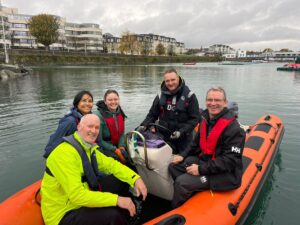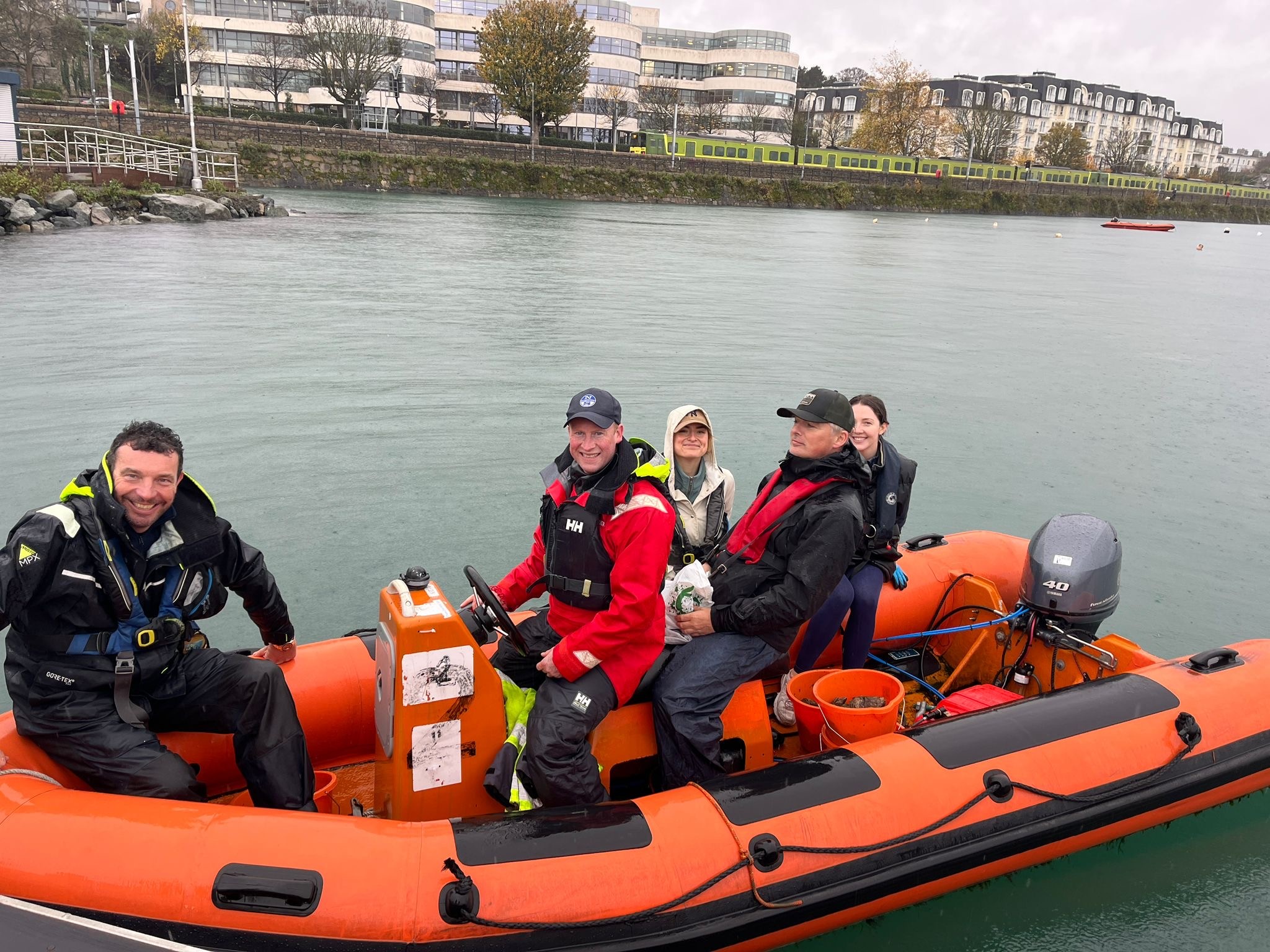Green Ocean has completed Phase 3 of its native oyster restoration project in Dun Laoghaire Harbour, marking a major step forward for marine biodiversity in Ireland. With 18,000 native oysters introduced to Dublin Bay, this community-driven initiative is helping to restore cleaner water, healthier habitats, and a more sustainable marine ecosystem.
Friday, November 7th marked an important milestone for the Green Ocean Dun Laoghaire project and for marine restoration in Ireland. In the early hours of the morning, 18,000 native oysters made their journey from Tralee Bay in County Kerry to their new home in Dun Laoghaire Harbour. Travelling overnight, they arrived at 6am, where a team of more than 30 volunteers, working in four teams and supported by three RIB boats, raced against time to get them safely into the water. By 2pm, every oyster had been carefully placed into its new floating basket along the middle breakwater pier, marking another significant step toward restoring ocean biodiversity in Dublin Bay.
Oysters as Environmental Engineers
Oysters play a vital role in maintaining healthy marine ecosystems. Each oyster can filter up to 190 litres of seawater per day, feeding on plankton and nitrates and resulting in clearer, cleaner water. This clarity allows sunlight to reach the seafloor, encouraging seaweed and seagrass to photosynthesise and flourish, which in turn creates nursery habitats for fish and other marine life. Oysters also help stabilise the seabed by reducing turbidity and providing anchor points for seaweed and seagrass. These natural structures make the ecosystem more resilient to waves and storm surges, strengthening the harbour’s environmental balance.
Building on Phases 1 and 2
As with any project, the early stages were crucial in shaping the path forward. The Phase 1 pilot, launched in 2023 with 450 oysters, provided key insights into the high survival and growth rates of native oysters, along with confirmed reproduction and settlement of larvae on test trays. However, the original basket system proved labour-intensive, as marine growth on the baskets required constant manual cleaning, which limited scalability for larger restoration efforts.
Phase 3 Innovation: Floating Flip Baskets
Following advice from our partners at Bord Iascaigh Mara, we sought to use a floating flip basket system developed in New Zealand. This innovative design allows the baskets to be flipped every number of weeks (depending on the time of year), enabling seabirds to naturally clean away marine build-up, a simple and effective nature-based solution to what had been a major maintenance challenge. The new system reduces manual labour, supports sustainable scaling, and enhances the potential for long-term oyster restoration in Dun Laoghaire Harbour.
Toward an Oyster Reef
Native European flat oysters spawn when water temperatures reach around 15 degrees Celsius, typically in July or August. Each female can release up to 1.5 million fertilised larvae, which float for about ten days before settling on a suitable surface. Because these oysters prefer to attach to other oyster shells, they will not dominate local marine life. To encourage natural settlement, shell substrate will be spread near the floating baskets in April or May 2026, helping to lay the groundwork for a thriving oyster reef in Dun Laoghaire Harbour and contributing to broader native oyster restoration across Ireland’s coastline.
A Scientific Roadmap
Measuring environmental impact is a critical part of this project. Professor Fiona Regan and her team at Dublin City University’s Water Institute began baseline water quality studies during the summer of 2025. They are tracking key indicators to monitor changes in water clarity, biodiversity, and ecosystem health over time. This ongoing research will provide valuable data on how oyster restoration influences marine water quality and habitat regeneration, with results shared publicly as the project develops.
A Shared Source of Joy
While November 7th was not especially cold, it was relentlessly wet; yet the mood on the pier remained upbeat and determined. Volunteers from Goodbody Stockbrokers, Matheson LLP, Jenkinson Logistics, Vagabond Tours, and the scientific team from DCU all joined forces, working side by side toward a shared goal. Despite the rain, the atmosphere was filled with energy, teamwork, and positivity. Witnessing this collaboration, and being part of it, was deeply uplifting. It was a reminder of what can be achieved when people come together to protect and restore the natural world. It truly was a life-enhancing and magical experience.

If you would like to learn more or get involved, please contact us at info@greenoceanfoundation.ie
My thanks to everyone who made this a reality!
Best wishes
David

